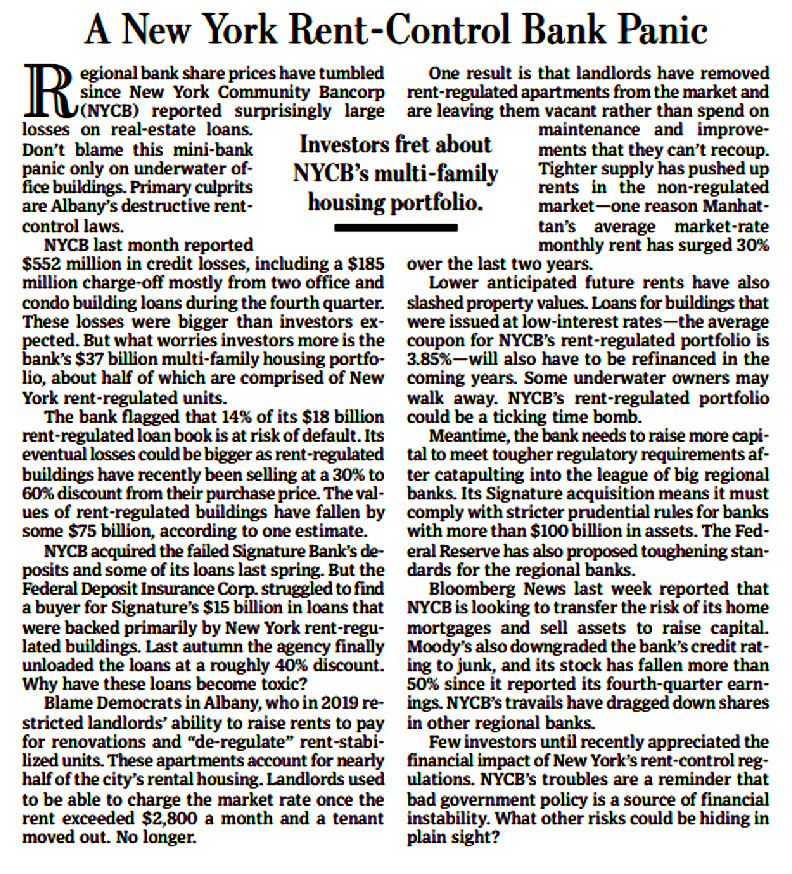The evidence is clear.
We are reminded this week that “vacancy control” is a quick-fix political narcotic that kills the patient, but faster than anyone expected. Together with rent control, vacancy control is crushing the rental housing market in New York. Anecdotal evidence reflects a flatlining market. Vacancy control is cited today in the Wall Street Journal as exacerbating housing investment woes–we note more intense inequality by excluding the poor, needy, and desperate home seekers, who are, incidentally, predominantly of color.
(Irrefutable Truth: Vacancy control = gentrification)
Proof? Wall Street Journal, February 12, 2024: commentary reflecting abject failure of rent controls in New York: Albany apparently ignores the need to preserve vacancy decontrol and markets crash. In California, mobilehome parks were expressly denied vacancy decontrol in legislation for residential rental housing (Costa Hawkins): result, no new mobilehome parks in 40 years; hundreds of closures.
More proof? According to the New York Community Bancorp (NYCB), a panic is setting in due to the state’s destructive rent control laws. Specifically, at risk is a $37 billion multifamily housing portfolio about half of which are comprised of New York rent-regulated units. A full 14% of its $18 billion rent-regulated loan book is at risk of default. Rent-regulated buildings are selling at a 30 to 60% discount, and the value of rent-regulated buildings has fallen by $75 billion. Exemplary of this trend is NYC B’s acquisition of signature bank. The FDIC’s struggle to find a buyer for $15 billion in loans primarily backed by rent control buildings. The FDIC finally “unloaded” the loans at a 40% discount. “Why have the loans become toxic?”
“Rent control was modified to restrict the ability to raise rents for renovations and deregulate rent-stabilized units.”
Clearly, progressive politics mixed with abject ignorance of basic mathematics proves toxic to a functioning markets: insolvency is the inability to pay indebtedness as it falls due. Consequently, Moody’s has downgraded the bank’s credit rating to “junk,” and its stock has fallen more than 50% since it reported its fourth-quarter earnings. The bad news has dragged down shares and other regional banks.
The destructive force of rent control fortified with a double-shot of vacancy control, has now metastasized, like cancer, well beyond the mom-and-pop and into the institutional financial markets. This is the final resting place for housing investment: no more revitalization, stock prospects, new loans for construction.
One constitutional test for rent control is whether or not the enterprise continues to attract capital and discourage flight of investment. If that test had any real merit, the current evidence of failure would mean striking the entire rent control regime, or at least the vacancy control element of it. But since governments will argue that any conceivably constitutional application of rent control survives scrutiny, we have a constitutional suicide pact between the legislature and judiciary to turn society back to a rolling landscape of agrarian villages.
It’s not too late for California to change course in the void continuing deterioration of housing opportunity by chasing the false promises of rent control.


